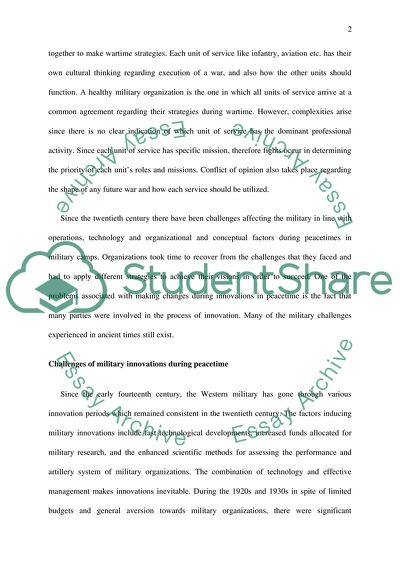Cite this document
(“Challenges for Military Organizations in Peacetime and Wartime Essay”, n.d.)
Challenges for Military Organizations in Peacetime and Wartime Essay. Retrieved from https://studentshare.org/military/1648073-challenges-for-military-organizations-innovating-in-peacetime-and-wartime
Challenges for Military Organizations in Peacetime and Wartime Essay. Retrieved from https://studentshare.org/military/1648073-challenges-for-military-organizations-innovating-in-peacetime-and-wartime
(Challenges for Military Organizations in Peacetime and Wartime Essay)
Challenges for Military Organizations in Peacetime and Wartime Essay. https://studentshare.org/military/1648073-challenges-for-military-organizations-innovating-in-peacetime-and-wartime.
Challenges for Military Organizations in Peacetime and Wartime Essay. https://studentshare.org/military/1648073-challenges-for-military-organizations-innovating-in-peacetime-and-wartime.
“Challenges for Military Organizations in Peacetime and Wartime Essay”, n.d. https://studentshare.org/military/1648073-challenges-for-military-organizations-innovating-in-peacetime-and-wartime.


